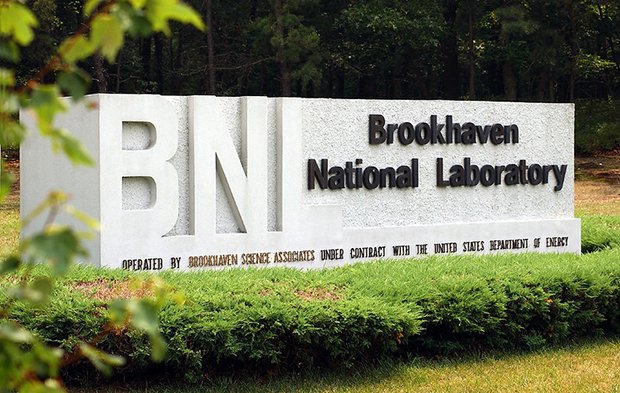With around $650 million in annual funding, employing over 2,500 people and home to seven Nobel Prizes, Brookhaven National Lab is a heavy-hitter in the scientific community. It’s a multipurpose lab that runs large, state-of-the-art facilities doing some of the world’s most cutting-edge scientific research. Just this year, the lab was chosen as the site to build a new multi-billion dollar atom smasher to probe the forces that glue all visible matter in the universe together.
Here we present some history and crazy facts about Brookhaven National Lab.
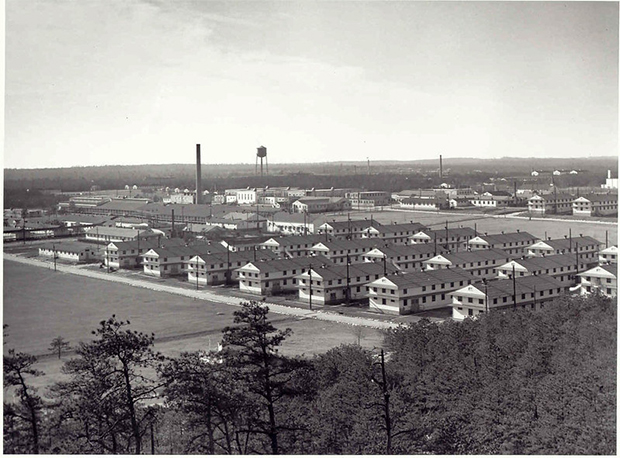
Camp Upton. Photo: Brookhaven National Lab.
History
-
In 1946, the non-profit Associated Universities Incorporated (AUI) was formed by nine major universities (Columbia, Cornell, Harvard, Johns Hopkins, Massachusetts Institute of Technology, Princeton, University of Pennsylvania, University of Rochester, and Yale) to establish a new science facility in the Northeastern U.S.
-
In 1947, Brookhaven National Lab (BNL) was established by the US Atomic Energy Commission (AEC)—predecessor to today’s Department of Energy (DOE)—to be run by AUI on the former site of the U.S. Army’s Camp Upton
-
U.S. Army's Camp Upton was active from 1917 until 1920, and from 1940 until 1946
-
AUI was responsible for building and then managing BNL until 1998
-
BNL has been responsible for discoveries leading to many advances for science and society as well as seven Nobel Prizes
-
More than 100 scientists at BNL were involved in designing, building and running the experiments that discovered the Higgs boson particle (aka the God Particle) at Europe's Large Hadron Collider in 2012
-
BNL researchers have discovered many new subatomic particles, including: the muon neutrino, the K meson, the omega-minus particle, the charmed baryon, neutral and negative sigma baryons, the phi vector meson, the antiparticles Xi-minus and Xi-zero, and the J/psi particle
-
In Fiscal Year 2018 BNL reported that it had $657 million in total funding
-
That year, the lab spent $171 million on goods and services, $26 million of which was spent on Long Island companies
-
In 2018, BNL employed 2,550 people; 98% live on Long Island
-
More than 5,000 visiting researchers came to the lab from university, corporate and government institutions
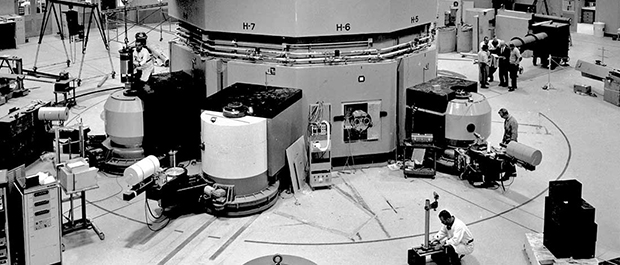
Photo: Brookhaven National Lab.
BNL Nuclear Reactors
-
In 1947 construction began on the Graphite Research Reactor (BGRR) Like nuclear reactors that produce electrical power, BNL reactors work on the same pricipal but on a smaller scale
Brookhaven Graphite Research Reactor
-
In 1947 construction began on the Graphite Research Reactor (BGRR)
-
The BGRR operated from 1950 through 1968
-
The BGRR was the world’s first nuclear reactor built solely to perform scientific research on peaceful uses of the atom
-
The reactor's primary mission was to produce neutrons for scientific experimentation and to refine reactor technology
-
It was fully decommissioned and dismantled, with the project completed in 2012
-
According to a news report, the process took 13 years and cost $148 million dollars
-
The reactor core was a 25-foot cube weighing 700 tons consisting of 60,000 graphite blocks
-
23.9 million pounds of radioactive waste was removed and sent to Nevada and Utah for disposal
High Flux Beam Reactor
-
The High Flux Beam Reactor (HFBR) was a small research nuclear reactor that operated from 1965 through 1996
-
It provided a source of neutrons for multidisciplinary scientific research
-
Scientists using the HFBR determined the structures of the 23 amino acids that make up every protein in every living cell
-
A 1994 fire at the HFBR exposed several workers to radiation
-
In 1996, the radioactive element tritium was detected in groundwater monitoring wells that had been installed near the reactor. It was later determined that the tritium originated from a water leak from the HFBR’s spent fuel pool
-
DOE’s and BNL’s investigation of the incident concluded that the water from the spent fuel pool had been leaking for as long as 12 years without DOE’s or BNL’s knowledge, but never left the lab site and has now decayed below drinking water standards
-
In 1999, after three years of safety and environmental reviews, the HFBR was permanently shut down
-
Decontamination and decommissioning of the HFBR complex, consisting of multiple structures and systems to operate and maintain the reactor, are ongoing
Medical Research Reactor
-
The Brookhaven Medical Research Reactor (BMRR) was built to meet scientists' needs for neutrons for medical research
-
According to BNL, this reactor, which was the first in the nation to be constructed specifically for medical research, started operations on March 15, 1959 and continued operations until December 2000
Particle Accelerators
-
According to the BNL website, a particle accelerator takes stationary charged particles, such as electrons, and drives them to velocities near the speed of light
-
In some circular accelerators, the particles collide. Scientists study the results of these extremely high energy collisions to find new particles and reactions, some that haven’t existed in a natural state since just after the Big Bang
-
BNL has operated many particle accelerators in its history and a new one has just been approved
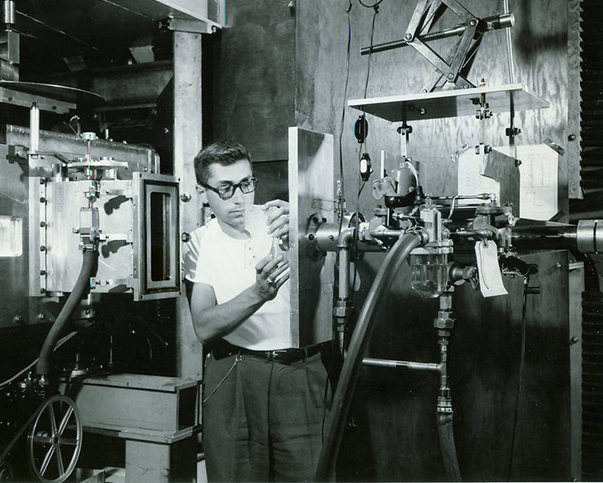
An experiment at the Cosmotron. Photo: Brookhaven National Lab
Cosmotron
-
In 1948, the Atomic Energy Commission approved a plan for a proton synchrotron to be built at BNL called the Cosmotron
-
The Cosmotron would accelerate protons to previously unheard of energies—comparable to the cosmic rays showering the earth's outer atmosphere
-
At the time, the Cosmotron was the world's highest energy accelerator, the first to send particles to energies in the billion electron volt, or GeV, region
-
The Cosmotron ceased operation in 1966 and was dismantled in 1969
Alternating Gradient Synchrotron
-
The Alternating Gradient Synchrotron (AGS) began operating in 1960 and is still in use today
-
The AGS was the world's premiere accelerator when it reached its design energy of 33 billion electron volts (GeV) in July of 1960
-
Three particle discoveries made at the AGS each won the Nobel Prize in physics
-
Until 1968, the AGS was the highest energy accelerator in the world
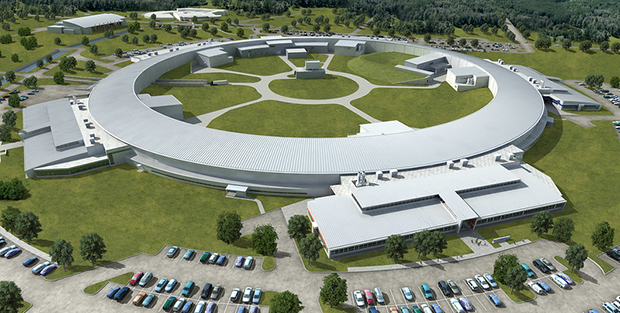
The National Synchrotron Light Source. Photo: Brookhaven National Lab
National Synchrotron Light Source
-
The National Synchrotron Light Source (NSLS) operated from 1982 until 2014
-
The NSLS was one of the world’s most widely used scientific research facilities
-
A new National Synchrotron Light Source II (NSLS-II) opened at BNL in 2014 and produces some of the brightest x-rays available anywhere in the world. NSLS-II, paired with the lab’s Center for Functional Nanomaterials is being used to create and study new materials at the nano-scale.
-
The NSLS hosted about 2,400 researchers annually from more than 400 universities, laboratories, and companies
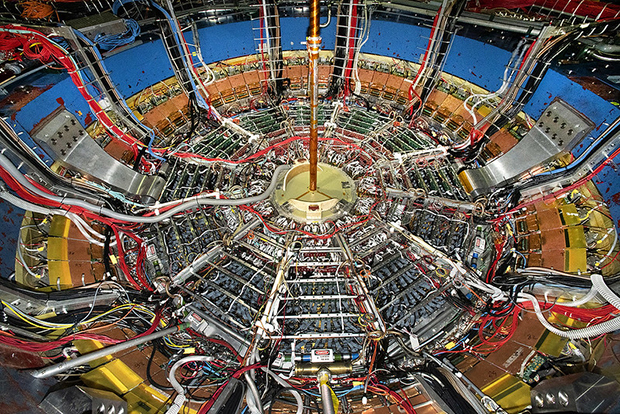
The STAR detector at the Relativistic Heavy Ion Collider. Photo: Brookhaven National Lab.
Relativistic Heavy Ion Collider
-
The Relativistic Heavy Ion Collider (RHIC) has operated since 2000
-
It collides atomic nuclei of atoms (from hydrogen to heavy nuclei such as gold or uranium) head-on at energies of 100 billion electron volts per proton or neutron
- RHIC was the first machine to recreate and study ultra-hot matter (called quark-gluon plasma) that existed at the dawn of time aka a fraction of a second after the Big Bang
Electron-Ion Collider
-
In 2020, the U.S. Department of Energy (DOE) named BNL as the site for building an Electron-Ion Collider (EIC), a one-of-a-kind nuclear physics research facility that will be a successor to RHIC
-
The EIC will be designed and constructed over ten years at an estimated cost between $1.6 and $2.6 billion, according to a report
-
It will smash electrons into protons and heavier atomic nuclei in an effort to penetrate the mysteries of the “strong force” that binds the atomic nucleus together
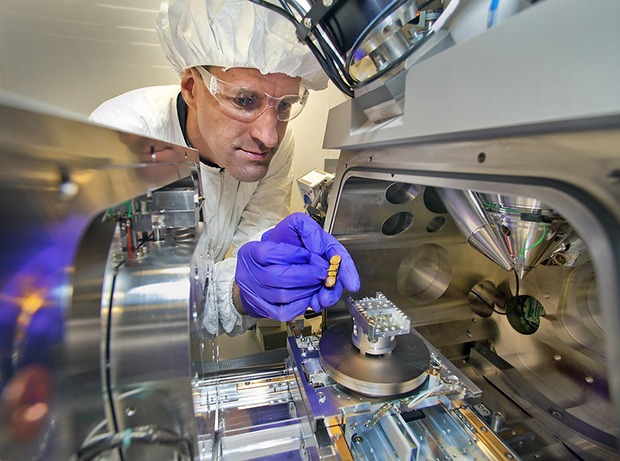
Nanospecimen Preperation. Photo: Brookhaven National Lab
Some amazing discoveries at BNL
-
MagLev: In 1968, Gordon Danby and James Powell, two BNL researchers, patented Maglev, the principle of superfast magnetically-levitated transportation. Conceived as a 300-mile-per-hour mass transit alternative to congested highways, Maglev has been actively pursued in Germany and Japan.
-
World’s First Video Game: Before there was Atari or Nintendo, there was Tennis for Two, which may have been the first video game ever created, BNL scientists built the pioneering system to entertain visitors to the Lab in 1958
-
PET scanning: Brookhaven scientists synthesized the first successful radiotracer for positron emission tomography (PET) imaging, which is now widely used in neuroscience and cancer imaging
-
Human insulin synthesized: The first chemical synthesis of a human protein was that of human insulin done at BNL. This work paved the way for later production of human insulin, which replaced animal insulin in the treatment of diabetes
-
Parkinson’s disease treatment: Developed at Brookhaven in the 1960s, Levodopa, or “L-dopa,” a medicine that the brain converts to dopamine, is still the gold standard for treating Parkinson’s disease










